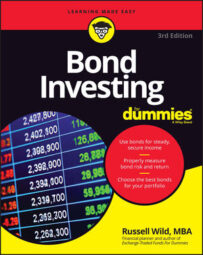Rebalancing means getting your investment portfolio back in order. It won’t be easy. You’ve seen your stocks go up while your bonds have languished; rebalancing is the smart thing to do.
Unless your life circumstances have changed, you probably still want a 60/40 portfolio. That means that your new $116,000 portfolio should be ($116,000 x 60 percent) $69,600 in stocks, and ($116,000 x 40 percent) $46,400 in bonds. In order to get to that point, you’re going to have to sell ($75,000 – $69,600) $5,400 in stocks and buy ($46,400 – $41,000) $5,400 in bonds.
Say you’ve decided that you want a portfolio of 60 percent equities and 40 percent fixed income (commonly expressed as a 60/40 portfolio). You have $100,000, so you aim to construct a portfolio that is $60,000 in stocks and $40,000 in bonds. Over the ensuing months, the stock market takes off.
At the end of a great year, you count your blessings and realize that you now have not $60,000, but $75,000 in stocks. Your bonds, however, have hardly budged. Say you have $41,000 in bonds. Your entire portfolio is now worth ($75,000 + $41,000) $116,000. But you no longer have a 60/40 portfolio. You have a 65/35 portfolio. Funny how that happens.
What to do? It’s time to rebalance.
Tweak your holdings to temper risk
The primary reason to rebalance is to keep you from losing your shirt. If your personal situation a year ago warranted a 60/40 portfolio, then a 65/35 split is going to be more volatile than the portfolio you want. If you continue to leave the portfolio untouched and stocks continue to fly, you’ll eventually wind up with a 70/30 portfolio, and then a 75/25 portfolio.
And what happens if the stock market reverses at that point, moving as quickly backwards as it was moving forwards a year or two before? You’ll see a much larger loss than you ever bargained for.
Wouldn’t you rather lock in some of your profits and start afresh with the proper portfolio mix?
Savor the rebalancing bonus
Rebalancing also helps you to realize larger returns over time. Think about it: Most investors buy high, choosing whatever asset class is hot, and sell low, getting rid of whatever asset class is lagging.
The financial press is continually pushing us to do this; “10 HOT FUNDS FOR THE NEW YEAR!” inevitably focuses on ten funds that have risen to new heights in the past months, largely because of the kind of asset class in which they invest (U.S. stocks, foreign stocks, long-term bonds, or whatever).
Studies show that, as a result of continually buying high and selling low, the average investor barely keeps up with inflation. It’s sad. But you, by rebalancing regularly, are destined to wind up ahead. Rather than buying high and selling low, you will continually be selling high and buying low.
Over the long run, not only will rebalancing temper your risk, but your long-term returns, if we’re simply talking about rebalancing stocks and bonds, will tend to be about 1/2 percent higher. Need proof?
Consider the ten-year average annual return of the Vanguard Total Stock and the Vanguard Total Bond Index funds. They currently clock in at 4.4 percent average annual return for the stock fund and 5.5 percent for the bond fund. Adding the two together, giving the stocks a 60-percent weighting and the bonds a 40-percent weighting, you would expect the average annual ten-year return of the two to be 4.84 percent.
But when you look at the Vanguard Balanced Index fund, which combines the total stock market with the total bond market and continually rebalances, the average annual return for the same period (ending January 31, 2012) is not 4.84 percent — it’s 5.27 percent, despite an expense ratio slightly higher than either the stock or bond index fund.
If you invest in multiple asset classes (including commodities, foreign and domestic stock, and so on), regular rebalancing may add a full percentage point or more each year to your long-term returns.
Schedule your portfolio rebalance
With the miracle of modern technology, Excel spreadsheets and whatnot, rebalancing can be easy — too easy! Rebalancing your portfolio every week, or even every month, is most likely going to be counterproductive. You may get hit with transaction costs, as well as potential capital gains taxes, with every sale you make.
But another important (and often overlooked) factor is the momentum of markets: When an asset class shoots up, all those yokels who like buying something that is up will often, by the very fact that they are buying, force the price a bit higher.
The question of how often to rebalance has been studied to death, and those studies show that someone who rebalances as often as he brushes his teeth tends to lose out to momentum — in addition to paying more in transaction costs and taxes.
So, what’s the perfect time to rebalance? There is no perfect time. It depends on the volatility of the markets, the correlation of the securities in your portfolio, the cost of your personal transactions, and your tax status. In general, however, rebalancing should be done once every year or two.
If you are retired and pulling cash from your portfolio, you may want to rebalance twice a year in order to make sure your cash reserve doesn’t dip too low. But do be careful whenever selling securities to watch your trading costs and monitor your potential tax hit.
The division between stocks and bonds, be it 70/30 or 50/50 or 30/70, is often the most important risk-and-return determiner in your portfolio. Even if you allow everything else to get out of balance, keep your balance of stocks and bonds on an even keel.
Such balance will keep you afloat and spare you from getting slammed into financial bridges or swamped by the wake of inflation.

